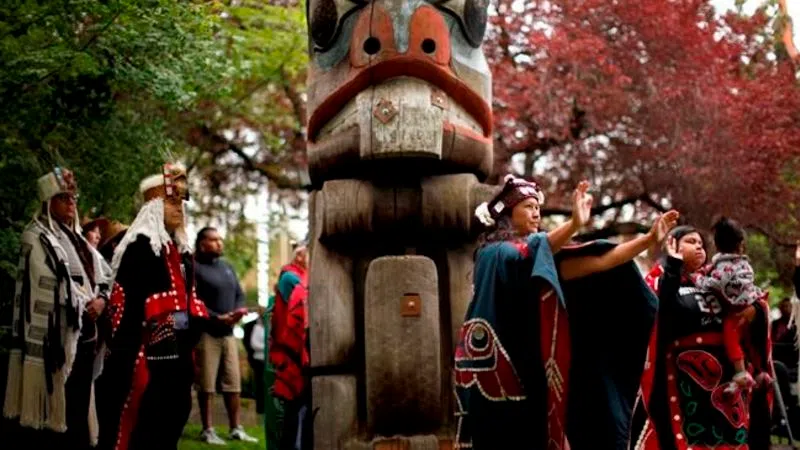
Aging Haida totem comes down during ceremony outside Royal B.C. Museum
VICTORIA — Dancers circled an aging totem pole that tells the story of a murdered Haida woman before it was hooked to a crane and gently lowered to the ground on Wednesday.
The replica Haida mortuary totem stood at the Royal British Columbia Museum’s Thunderbird Park for almost 65 years, but engineers determined the pole suffered internal damage through exposure to the elements and was at risk of falling.
The ceremony was the second such gathering in recent days to bring down totems at the end of their life spans.



